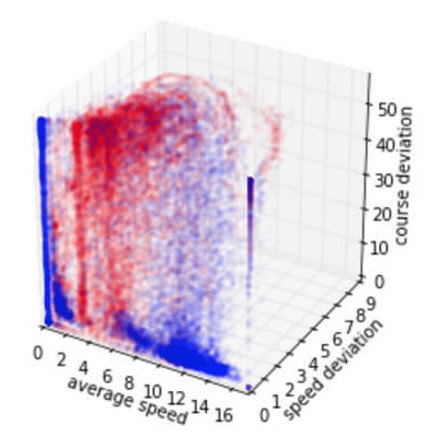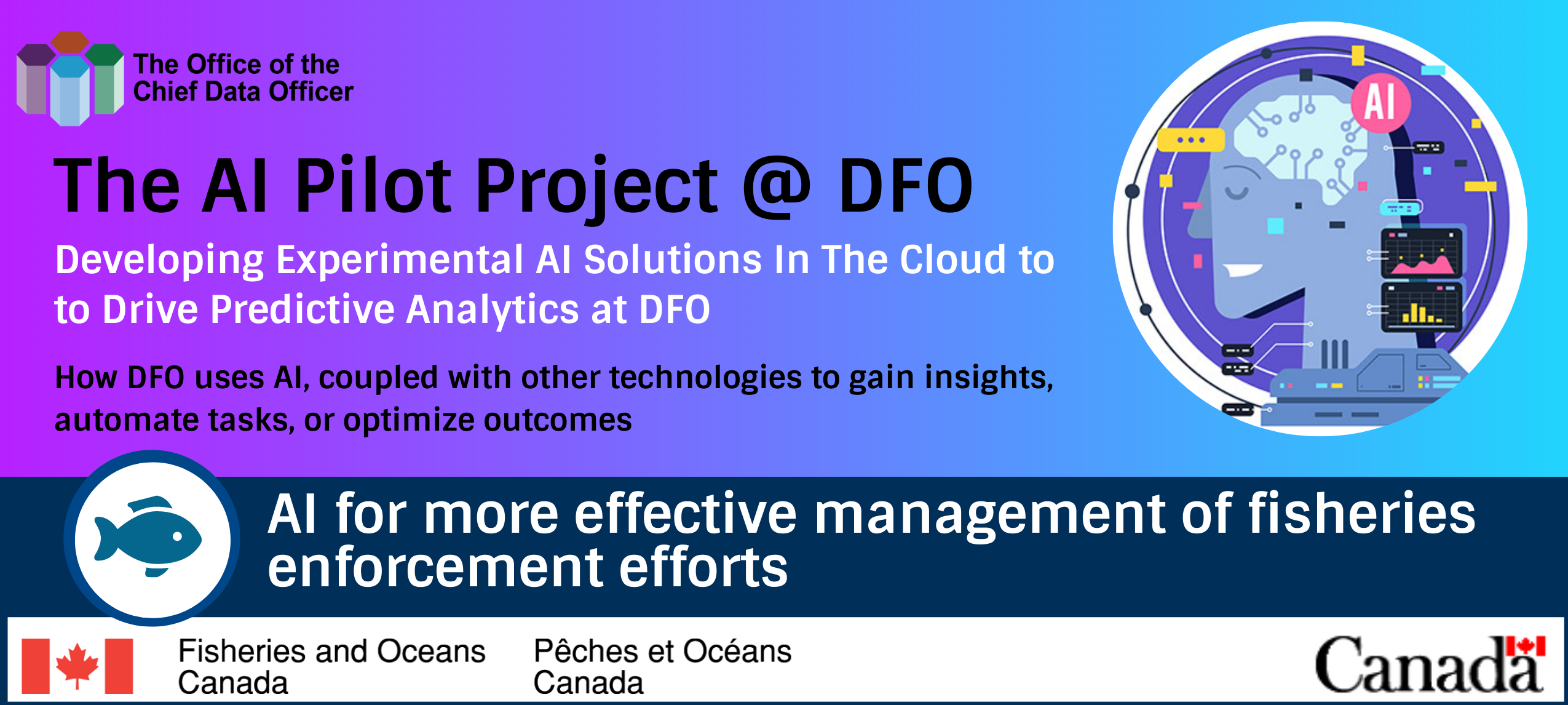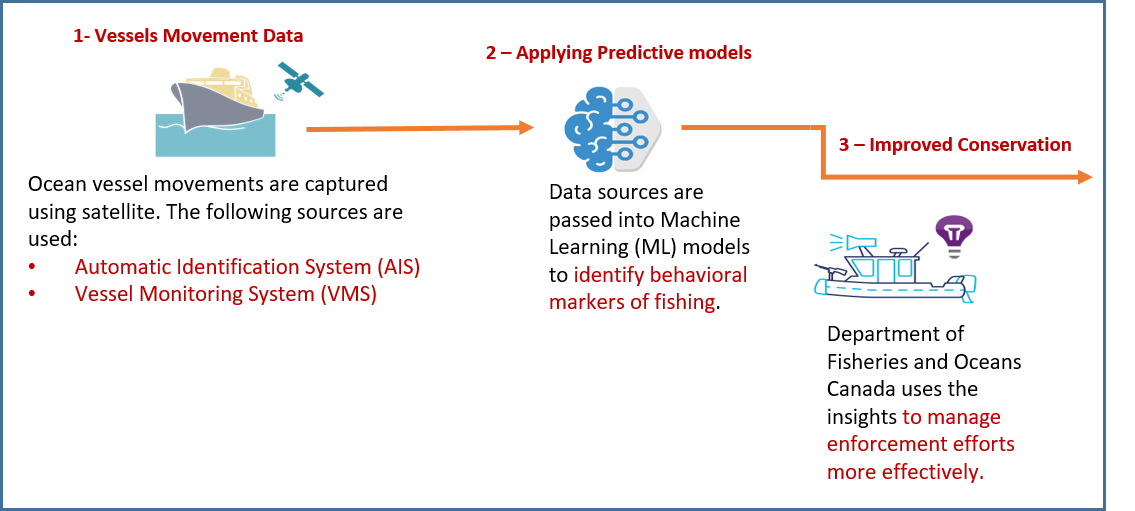Important: The GCConnex decommission will not affect GCCollab or GCWiki. Thank you and happy collaborating!
Difference between revisions of "AI test"
| Line 18: | Line 18: | ||
== The Solution == | == The Solution == | ||
| − | [[File:Speed.jpg|alt=Fishing activity, shown in red, is most common for speeds in the range of 2 to 5 knots and is also associated with larger deviations in speed and course.| | + | [[File:Speed.jpg|alt=Fishing activity, shown in red, is most common for speeds in the range of 2 to 5 knots and is also associated with larger deviations in speed and course.|162x162px|Fishing activity, shown in red, is most common for speeds in the range of 2 to 5 knots and is also associated with larger deviations in speed and course <ref>Tracking the global footprint of fisheries, David A. Kroodsma et al, SCIENCE 23 FEB 2018 : 904-908</ref>.|thumb]] |
Vessel tracking data such as Automatic Identification System (AIS) data and Vessel Monitoring System (VMS) data can provide insight into vessel movements. This data can be used to generate estimated trajectories for moving vessels and provide an excellent resource for revealing patterns of fishing activities and behavior. Vessel speed and course can be useful indicators of vessel fishing activity. | Vessel tracking data such as Automatic Identification System (AIS) data and Vessel Monitoring System (VMS) data can provide insight into vessel movements. This data can be used to generate estimated trajectories for moving vessels and provide an excellent resource for revealing patterns of fishing activities and behavior. Vessel speed and course can be useful indicators of vessel fishing activity. | ||
| − | |||
| − | |||
| − | |||
* Predictive Model to predict vessels positions indicative of fishing activity and hence predict the fishing effort within a specified region of interest. | * Predictive Model to predict vessels positions indicative of fishing activity and hence predict the fishing effort within a specified region of interest. | ||
Revision as of 14:56, 15 December 2021
Computers can learn to spot fishing activities from vessel movements data captured by satellite receivers. DFO has developed a predictive model to detect fishing activities based on vessel speed, course, and fishing gear type. Another predictive model is developed to detect the main areas of fishing activities. The insights gained from both models can give Canadian fishery officers a bird’s eye view over what is happening on the water leading to more effective management of enforcement efforts.
The Problem
Illegal, Unreported, and Unregulated fishing (IUU) has many negative environmental, economic, and social impacts.
- It is considered a major contributor to declining fish stocks and marine habitat destruction. It is estimated that one in every five fish sold is caught illegally. This represents up to 26 million tonnes of fish caught annually, valued at between $10 to $23 billion USD [1].
- Hotspot areas for IUU can lead to higher amounts of ghost gear as vessels fishing illegally are more likely to abandon or lose their gear. Ghost fishing gear is considered one of the biggest threats to our oceans leading to more marine pollution which can be fatal to fish, marine mammals and other marine life [2] .
- This is not only about ensuring the sustainability of our oceans, but also to ensure the safety of DFO fishery officers. Incidents of violence against DFO fishery officers are reported every year as are other forms of criminal activity taking place under the guise of fishing such as drug or human trafficking.
Canadian fishery officers are heavily present on the water, in the air and in port in order to monitor and inspect fishing activities. Given how large our oceans are, It is hard for DFO fishery officers to track and react to IUU fishing activities. Using only this heavy presence to investigate fishing activities is clearly an expensive and time-intensive process.
The Solution

Vessel tracking data such as Automatic Identification System (AIS) data and Vessel Monitoring System (VMS) data can provide insight into vessel movements. This data can be used to generate estimated trajectories for moving vessels and provide an excellent resource for revealing patterns of fishing activities and behavior. Vessel speed and course can be useful indicators of vessel fishing activity.
- Predictive Model to predict vessels positions indicative of fishing activity and hence predict the fishing effort within a specified region of interest.
- Predictive Model to find spatial hot spots of fishing activities, and hence find anomalous behaviour and focus enforcement efforts.
References
- ↑ https://www.dfo-mpo.gc.ca/international/isu-iuu-eng.htm
- ↑ https://www.dfo-mpo.gc.ca/fisheries-peches/management-gestion/ghostgear-equipementfantome/what-quoi-eng.html
- ↑ Tracking the global footprint of fisheries, David A. Kroodsma et al, SCIENCE 23 FEB 2018 : 904-908


